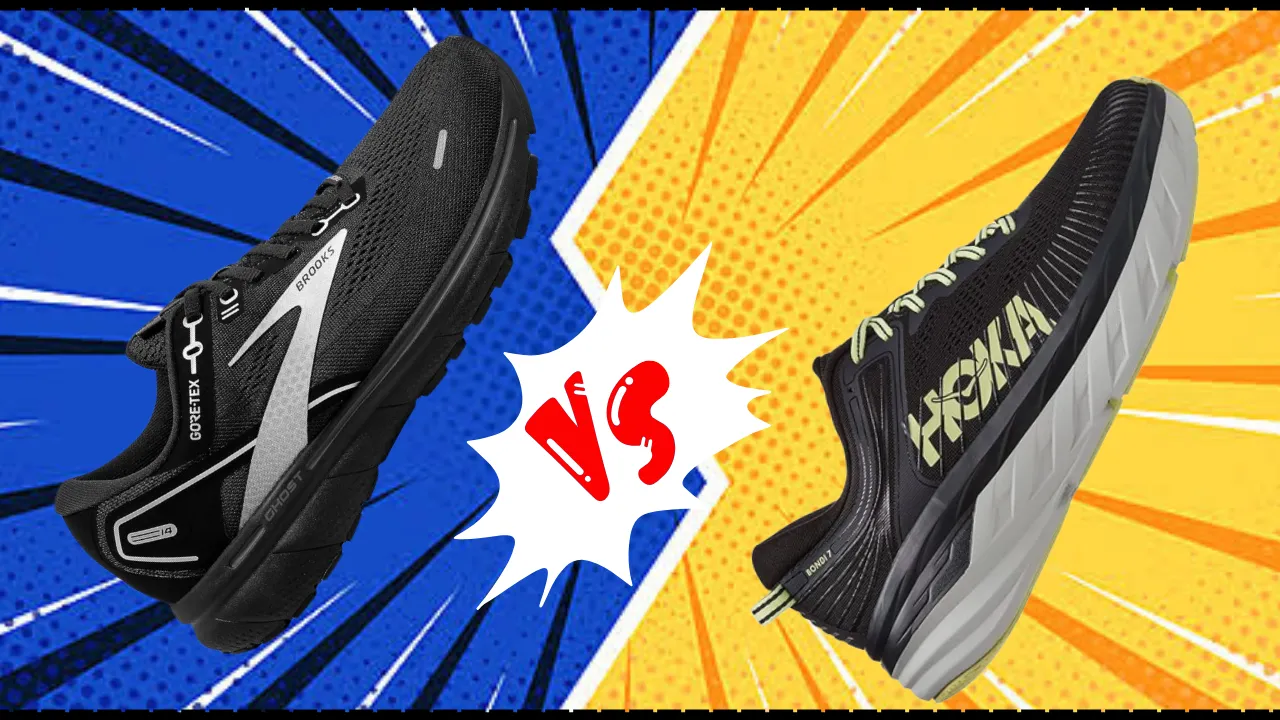Finding the right running shoe is crucial for comfort, performance, and injury prevention. Two popular cushioned trainers are the Brooks Ghost 14 and the Hoka Bondi 7.
Both shoes provide soft cushioning and support for logging miles, but they differ in their stabilizing features, weight, fit, and pricing.
This head-to-head comparison highlights the key similarities and differences to help you decide which shoe is the better choice for your running needs.
Similarities And Differences Between Brooks Ghost 14 and Hoka Bondi 7:
| Specs | Brooks Ghost 14 | Hoka Bondi 7 |
|---|---|---|
| Launched In | 2021 | 2020 |
| Stability | Moderate | Neutral |
| Flexibility | Moderate | Flexible |
| Sizing | Men’s 7-15, Women’s 7-13 | Men’s 7-15, Women’s 7-13 |
| Weight | 10.2 oz (men’s), 8.8 oz (women’s) | 10.8 oz (men’s), 9.4 oz (women’s) |
| Cushioning | DNA Loft v3 (Brooks proprietary foam) | EVA foam |
| Outsole | Blown rubber | Rubber |
| Midsole | DNA Loft v3 | EVA foam |
| Upper | Engineered mesh | Engineered mesh |
| Retail Price | $120 | $170 |
Brooks Ghost 14 vs Hoka Bondi 7: Features Comparison
By this point, we have provided you with an overview of both models. Let’s now compare the features of both shoes to decide the better one for you.
1) Materials
The outsoles on both shoes utilize quality rubber compounds for durability and traction.
The Ghost 14 features blown rubber while the Bondi 7 uses carbon rubber. The midsoles showcase key differences – the Ghost 14 incorporates Brooks’ DNA Loft v3 foam which provides a soft, stable ride while the Bondi 7 relies on injected EVA foam for all-around cushioning.
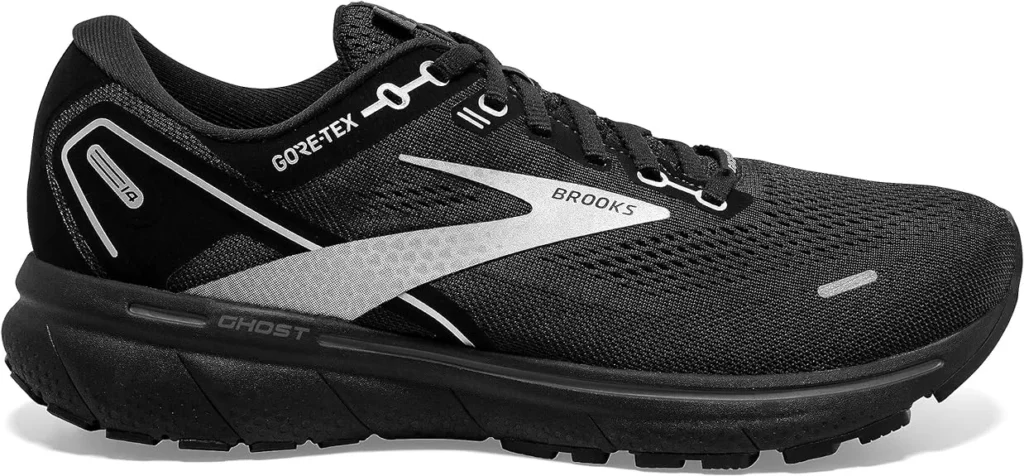
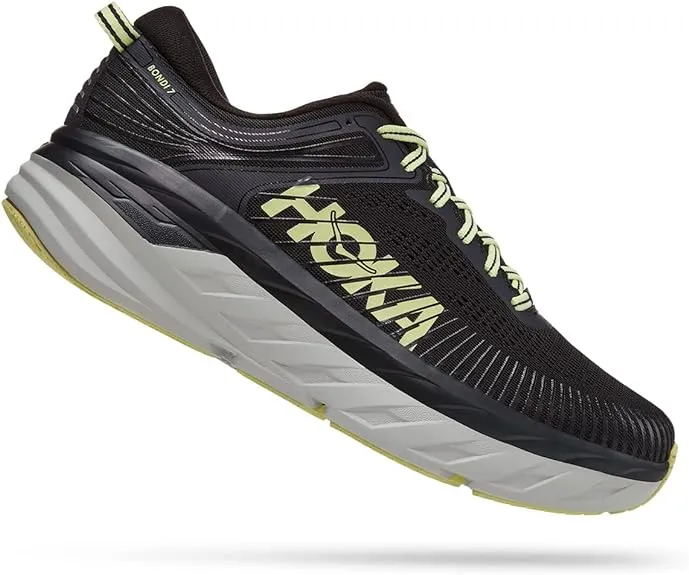
In the upper, both models use an engineered mesh material that is breathable and flexible but the Ghost 14’s upper includes 3D print overlays for structure and support. The shoes are comparable in weight though the Bondi 7 is slightly heavier.
Overall, the Ghost 14 utilizes more proprietary technologies and engineered materials while the Bondi 7 takes a simpler approach to cushioning and support.
2) Durability
Durability depends on mileage but both shoes are designed to last for 300-500 miles or more.
The outsoles on the Ghost 14 and Bondi 7 are made of durable rubber that protects against wear and tear. Testers note that the midsoles maintain their cushioning and responsiveness even after several hundred miles.
The uppers also retain structural integrity without excessive creasing or tearing. However, some testers feel that the Brooks Ghost 14 may have a slight edge in durability thanks to the brand’s quality standards and reputation for consistency.
The DNA Loft foam and 3D Fit Print overlays are designed to maintain their integrity.
The Bondi 7’s EVA foam is also resilient but as a maximalist shoe, the extra foam may compress over time. So while both provide good longevity, the Ghost 14 may better retain its “like-new” cushioning and support after hundreds of miles.
3) Fit
The Ghost 14 runs true to size for most runners with a medium width through the midfoot and toe box. The engineered mesh upper accommodates many foot shapes with its adaptive, sock-like fit.
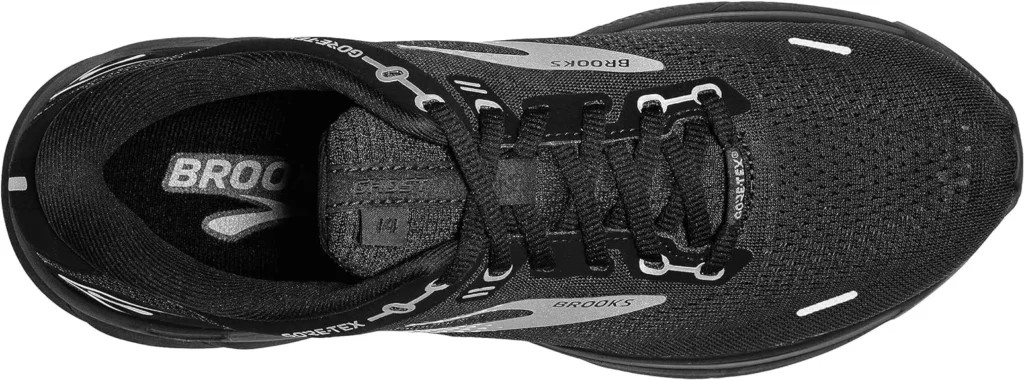
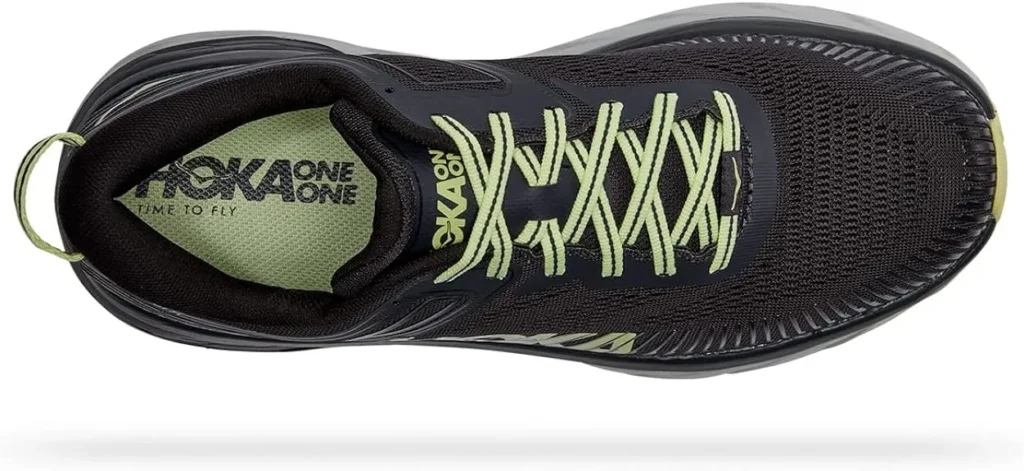
The Bondi 7 has a more narrow fit, especially in the toe box, so it may not work as well for runners with wider feet. The Bondi 7 is also known to run small/short so sizing up half a size is recommended for the best fit.
Both shoes use a traditional lacing system to customize the tightness and lockdown. Testers note that the Ghost 14 offers a secure midfoot hold while still feeling flexible through the forefoot. The Bondi 7 has a softer, less structured upper so some testers felt their foot slid around more during faster paces.
The Ghost 14 seems to accommodate more foot types thanks to its medium profile and secure lacing, while the Bondi 7 works best for runners with narrow to medium-width, low-volume feet.
4) Stability
The Ghost 14 is a neutral shoe but provides moderate stability features to prevent excess motion for overpronators. It uses a firm, dual-density midsole to guide the foot centrally through the gait cycle.
The upper also has printed overlays that lock the foot in place. In comparison, the Bondi 7 has a neutral platform that does not inhibit or correct pronation. Both shoes offer a stable base for heel strikers but the Ghost 14 gives more support to walkers and runners who need guidance.
The wide platform and frame of the Bondi 7 inherently enhance stability for all runners by balancing the foot on a flat, broad foundation. So while the Ghost 14 actively controls and corrects overpronation, the Bondi 7 promotes natural stability with its maximalist design.
Those who do not have pronation issues may prefer the neutral cushioning of the Bondi 7 while overpronators would benefit more from the moderate control of the Ghost 14.
5) Cushioning
Cushioning is where these shoes shine. Both utilize proprietary foam but the Brooks DNA Loft offers an exceptionally soft, pillowy ride. Testers describe the Ghost 14 as “like running on clouds” with ample shock absorption from heel strike to toe-off.
The DNA Loft foam runs the length of the shoe and adapts to the individual gait cycle. In the Bondi 7, EVA foam delivers consistent comfort though some testers felt the ride was not quite as soft. The extended midsole heel on the Bondi 7 helps manage impact while protecting the joints.
Testers also praised the “marshmallow-like” feeling underfoot. Overall, while both shoes provide excellent cushioning, the DNA Loft foam of the Ghost 14 seems to have the edge in delivering reactive softness mile after mile.
The higher stack height of the Bondi 7’s maximalist design allows for greater compression too which helps dampen the shock. Both excel at cushioning but the Ghost 14 is truly stand-out.
6) Value
At $170 retail, the Bondi 7 is moderately priced for a specialty running shoe with ample cushioning. The Ghost 14 costs $120, making it a great value buy packed with performance features. Runners get excellent cushioning, support, and versatility at a reasonable price point compared to competing brands.
The Ghost 14 also comes in wider sizing for men and women, adding to the value. When it comes to cost per wear, the Ghost 14 may have more longevity thanks to the durable cushioning, providing even more value over time.
However, the Bondi 7 still delivers responsive comfort and softness in a lightweight package. Dollar for dollar, while the Bondi 7 is still a quality running shoe, the Ghost 14 offers comparable technologies and features for $50 less.
Runners on a budget get more for their money with the Ghost 14 while the Bondi 7 is a reasonably priced max cushion shoe.
Brooks Ghost 14 vs Hoka Bondi 7: Performance Testing
So far you have a clear perspective of both shoes and their features. Let’s now compare the performance of both to see who excels.
1) For Walking
The ample cushioning in both the Ghost 14 and Bondi 7 makes them comfortable options for walking shoes. The DNA Loft and EVA foams provide shock absorption and energy return with each step.
The flexibility allows a smooth heel-to-toe transition during slower paces. Both have breathable uppers that prevent overheating and rubbing on longer walks.
The Bondi 7’s maximalist design gives it a slight edge for walking comfort thanks to the extra foam stack height. However, some may prefer the moderate support built into the Ghost 14 to reduce muscle fatigue. Overall, both are cushioned and comfortable right out of the box for walking.
2) For Running
Testers praise both models as go-to daily trainers and long-run shoes. The soft cushioning absorbs impact to protect joints over mileage. The Ghost 14’s DNA Foam is exceptionally responsive and adaptive to different gaits, providing a smooth, stable ride at easy paces and faster tempos.
The Bondi 7 is also responsive but some felt it was firmer and not as forgiving as the Ghost 14 at higher speeds. The Bondi 7’s wide, maximalist platform adds inherent stability to each stride.
Overall, while both deliver a comfortable, cushioned run, the DNA Loft foam gives the Ghost 14 a responsive and adaptive edge for accommodating various paces and distances more optimally.
3) For Plantar Fasciitis
The plush cushioning in both shoes helps provide pain relief for plantar fasciitis by absorbing shock and impact.
The Bondi 7’s thicker foam particularly helps reduce strain on the plantar fascia ligament with its soft, flexible landing. The arch support in the Ghost 14 gives added stability which can ease tension on the ligament as well. Testers prone to heel and arch pain praise both models for their shock attenuation and comfort.
Either shoe can aid recovery and make running manageable but the Bondi 7 seems ideal for providing immediate relief upon stepping thanks to its DNA Loft foam.
4) For Standing All Day
The cushioned midsoles in the Ghost 14 and Bondi 7 maintain comfort even during prolonged standing. Nurses, teachers, retail workers, and others on their feet all day appreciate the padded foam versus a hard slab.
The Ghost 14 offers arch support and stability to reduce muscle fatigue in the feet and legs when stationary for long shifts. The Bondi 7 cradles and cushions the foot on impact for hours on end.
Overall, both provide relief from hard floors when standing or walking constantly. The DNA Loft foam of the Ghost 14 seems to have a slight advantage for shock attenuation over time versus the EVA foam of the Bondi 7 when worn for extended daily use.
Final Verdict:
In the end, choosing between the Brooks Ghost 14 and Hoka Bondi 7 depends on your foot type, running needs, and budget. The Ghost 14 is the better choice if you:
- Have medium to wide feet
- Need mild stability for overpronation
- Prefer responsive cushioning adaptability
- Are on a budget
The Bondi 7 is likely the better pick if you:
- Have narrow to medium feet
- Do not need pronation support
- Prioritize softness underfoot
- Appreciate a wide base for inherent stability
Both shoes deliver extremely comfortable cushioning for long mileage as either daily trainers or walking shoes.
The Ghost 14 stands out for its DNA Loft foam that provides an exceptionally responsive, supportive ride. It can accommodate more foot shapes and running gaits thanks to its secure yet adaptive construction. Meanwhile, the Bondi 7 offers plush, pillow-like maximalist cushioning in a lightweight package. Its simple design places priority on softness underfoot.
Consider your fit needs, mileage, gait mechanics, and budget to decide if the Ghost 14 or Bondi 7 better suits your running and walking lifestyle.

